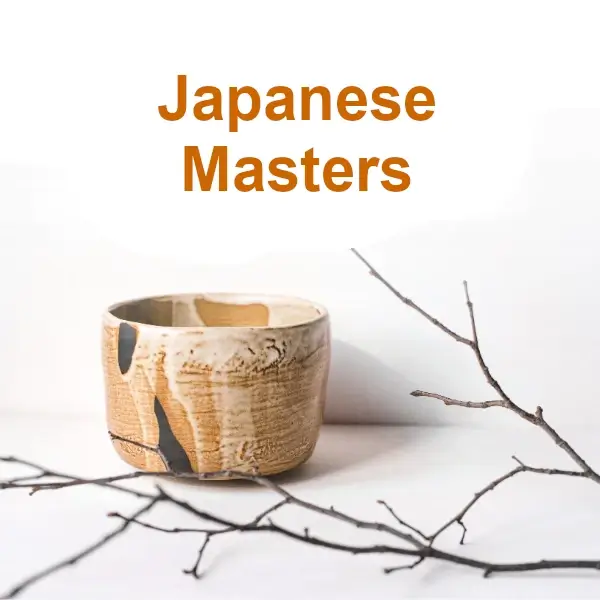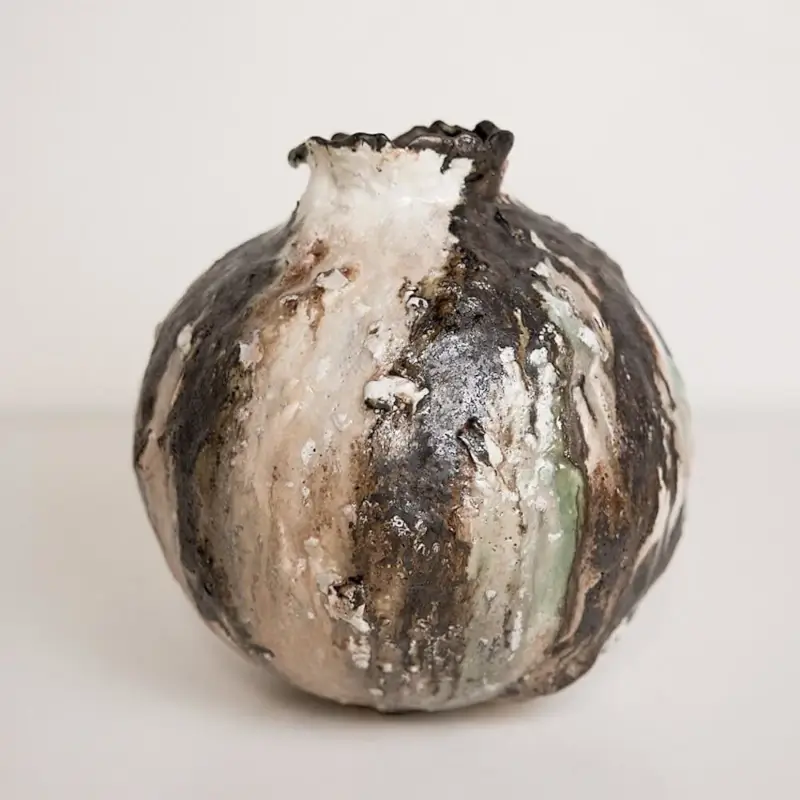Uichi Shimizu: Grand Master of Japanese Ceramics
Uichi Shimizu: Master of Japanese Ceramics
The life and work of Uichi Shimizu, born on March 5, 1926 in the Higashiyama district of Kyoto and died on February 18, 2004, is a story of dedication and mastery in the art of ceramics. From an early age, Shimizu immersed himself in the world of ceramics, leaving school at age 14 to become a student of Munemaro Ishiguro, a master ceramicist and Living National Treasure known for his work with Chinese ceramic styles.
Shimizu’s career was characterized by constant experimentation and an unwavering desire to perfect his craft. He excelled in the use of iron glazes and was particularly renowned for his works in crackle celadon, a technique that evokes the ancient ceramic traditions of the Song dynasty. In 1970, Shimizu moved his studio to the base of Mount Horai in Kosei, Shiga Prefecture, where he developed a variety of unique glazes using local materials.
Shimizu’s career has been recognized on numerous occasions. In 1985, he was named a Living National Treasure for his work with the ‘Tetsuyutoki’, a testament to his mastery and contribution to Japanese ceramic art. In addition, his work has been honored with prestigious awards, such as the Grand Prix at the Brussels International Exhibition in 1958 and the Gold Prize of the Japanese Ceramic Society in 1977.
Shimizu Uichi not only left a legacy of artistic beauty, but also pushed for a new expression in ceramics, challenging conventions and elevating ceramic art to new heights. His life and work continue to inspire artists and ceramic admirers around the world.
List of Japanese master ceramists
In an attempt to give recognition to the master ceramists of Japan, we have made a series of biographical articles, you can access them through this drop-down list.
We hope this will help to spread the beautiful tradition of Japanese pottery.
It will help us if you share on social media:
Other posts about Japanese pottery:




